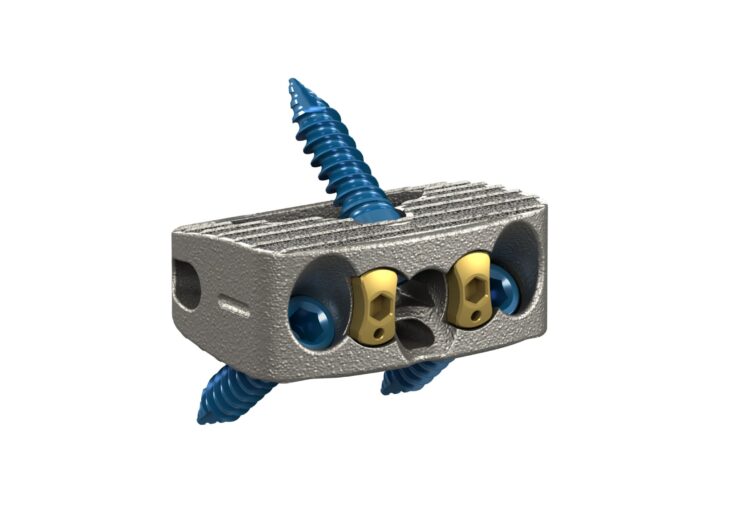Monterey AL is built of both solid and porous structures within a single implant, leveraging the company’s Tritanium In-Growth Technology to provide a favourable environment for bone regeneration and fusion

Stryker’s Monterey AL Interbody System. (Credit: Stryker)
US-based medical technology company Stryker has commercially launched the Monterey AL, its stand-alone interbody system designed for anterior lumbar interbody fusion (ALIF).
Monterey AL is built of both solid and porous structures within a single implant, leveraging the company’s Tritanium In-Growth Technology.
The material structure of the implant is designed such that it imitates the cancellous bone, providing a favourable environment for bone regeneration and fusion.
In the latest pre-clinical data, the undifferentiated stem cells grown on Tritanium presented osteogenic Alkaline Phosphatase without needing growth factor supplements, said Stryker.
Stryker spine division president Robbie Robinson said: “This is an exciting time for our division, as we continue to build momentum and expand our portfolio to bring new technology to our surgeon customers.
“One of our goals as a medical technology company and an implant manufacturer is to complement clear visualization and easy access with intuitive instruments and biologically inspired implant designs.
“Monterey AL combines more than 20 years of expertise in the creation of porous materials using additive manufacturing with innovative implants and instruments that are designed to give surgeons the flexibility to use our system without having to alter their preferred technique.”
Tritanium is a 3D-printed, novel, highly porous titanium material designed for bone in-growth and biological fixation, created using Stryker’s AMagine approach for additive manufacturing.
The material has strategically deeper and narrower cage footprints that allow surgeons to create indirect decompression by distracting the disc space posteriorly.
Its geometry prevents the cage from impinging posteriorly into the neural foramen and prevents the need to countersink the cage, providing easy access to the anterior screw holes.
Furthermore, Monterey AL comes with a sophisticated medial attachment, multiple technique possibilities, and a wide variety of screwdriver options to facilitate clear visualisation of and easy access to the surgical site, said the company.
Texas Neuro Spine Institute president and founder Bala Giri said: “No one understands 3D-printing like Stryker – the fact that they’ve been able to dial in the right mix of small, medium, and large pores in a reproducibly randomised matrix is incredible.
“Their growing body of pre-clinical data, specifically the cellular findings published most recently makes my decision to go with these products very straightforward.
“Our goal with any implant is spinal fusion, and Stryker has taken a very intentional approach to designing the Tritanium cages with this goal in mind.”
